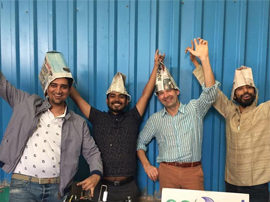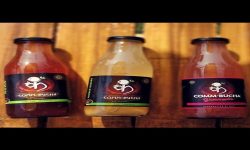
EcoAd plans to expand across 10 cities over next 3 years

Solving plastic problem through innovation
Back in 2009, Rohit Nayak, a student at VIT Pune was travelling from Mumbai to Nashik. He saw stations littered with a lot of plastic bags and realised that it was a big problem. He had come across this before. But it was at this point he started to think whether there was a possible solution to the problem. He realised that this was an issue that was affecting the entire world. It was destroying the ecosystem and killing birds and animals. It was also threatening the life of humans on the planet.
There is the Great Pacific Garbage Patch, a floating island of plastic midst the Pacific Ocean. It is estimated to be ‘twice the size of the continental US’. In India, 1,500 tons of plastic waste is generated every day. 80 per cent of this is plastic bags. Despite attempts to reduce the usage of plastic bags, they are still chosen over paper, as they are more commercially viable. Rohit wanted to come up with a cheaper and more environmentally viable alternative.
EcoAd started as a student project in 2009. In 2011 Sudhir Deshpande joined Rohit as a co-founder, they started full time operations in 2013 and registered as a private limited company in 2015.
In a chat with Larry Bradley, Rohit talks about their mission and how they plan to solve the plastic problem.
The inspiration:
The inspiration to be an entrepreneur came solely from trying to figure out how we could address this problem. Replacing plastic was the top priority. I came up with the idea of subsiding paper bags through advertisements on them. I also realised that some of the alternatives that were being used like brown paper bags were also harming the environment as it was resulting in trees with being cut. Bags made out of newspapers could be a viable alternative as it would recycle newspapers. Setting up an NGO was not an idea as we needed something that would be commercially viable.
The business model

Rohit Nayak
In the initial years, the business worked on the advertising subsidy model. But then we realised that to get advertisers we needed to give them a return on their investments which could only happen if we had a minimum reach. So we tweaked our business model. We started selling paper bags made out of newspapers at a slight premium to those clients who can afford to pay an extra cost. If legal plastic bags cost Rs 1.5 each, our bags cost between Rs 2-3. We want to take the number of plastic bags being sold and used to a required number in a certain area so that it makes business sense to advertisers. Then we can subsidise the cost of our bags further through ads.
The social aspect:
We work with women below the poverty line who have no education and no opportunity to earn an income. We train them to make paper bags and also set up a market linkage for raw material, i.e. newspapers. This helps them to earn an income and increase their purchasing power parity. They also have more decision making power in the family and also send their kids to school. Currently we have trained over 1,500 women and 220 women work directly with us. We plan to take our operations to 10 Indian cities in the next 3 years. We also plan to invest in some machines so that some of the time consuming part of the manufacturing process can be made easier.
Overcoming odds
People told us that paper bags cannot carry weight, but we made bags that could carry up to 3 kg. We were told that we would fail as paper bags cannot carry wet stuff but we managed to do that too. People were also worried about these bags being spoilt in the rain. We figured out that it was a valid point and made bags with more than one layer so these worked even in the rain. It is constant innovation that keeps us going towards a goal of replacing plastic bags altogether.
Do you think the company is using the right strategy for paper bags to capture the market? Do share your views.









